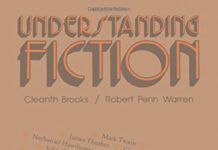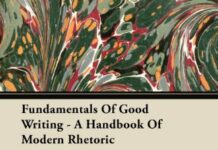
Ebook Info
- Published: 1956
- Number of pages: 324 pages
- Format: PDF
- File Size: 14.62 MB
- Authors: Cleanth Brooks
Description
A classic that has been widely used by several generations, this book consists of detailed commentaries on ten famous English poems from the Elizabethan period to the present. Index.
User’s Reviews
Editorial Reviews: About the Author Cleanth Brooks (1906-1994) was educated at Vanderbilt, Tulane, and Oxford universities. The Gray professor of rhetoric at Yale from 1947 to 1975, Brooks lectured and taught at many universities throughout his career. Additionally, he was co-editor, with Robert Penn Warren, of the Southern Review and the author of many books of criticism.
Reviews from Amazon users which were colected at the time this book was published on the website:
⭐It is hard to express just how important this book was to me, and to so many other English majors learning how to do close readings and analyses. In particular, the essay on “Macbeth” is insightful and witty. There certainly is a place for Marxist analysis, psychological literary analysis, and feminist literary analysis. But it is also important that there be a place for formalism or the New Criticism as well. This book is a good example of that literary method.
⭐Although first published over 60 years ago, this book continues to be essential for anyone who wants to understand how to read poetry. The poems examined in the book were written by many different authors over a period of over 300 years. Some of the poets include Marvell, Donne, Shakespeare, Milton, Pope, Gray, Wordsworth and T. S. Eliot. The book investigates the differences and the similarities in the poems and finally arrives at a deeper understanding of what poetry is. This is an essential book for anyone interested in significant poetry.
⭐I’m not sure whether I picked up my copy in the early ’60s as an M.A. candidate or in the mid to late-’60s as a Ph.D. candidate. But it was in the 1990s that, after I had delivered a paper at St. Louis University on Robert Penn Warren’s “All the King’s Men”–a session attended by, to my surprise if not shock, Cleanth Brooks–that I was able to get an autograph on my copy of “The Well Wrought Urn” by the book’s legendary author–the co-founder and revered avatar of “New Criticism” (which I heard more about than structuralism, postructuralism, postmodernism and deconstruction–all of which rose in the seventies).For me, the essay on Keats’ “Ode on a Grecian Urn” has always been the book’s centerpiece, offering at once an exemplary reading of the poem and a sterling model of the New Critical approach, one that reads a poem without reference to gender, race, social class, immigration status, religion, sexual orientation, historical-political context, or any of the other “litmus tests” practiced by the so-called “group identity politics” that are savaging the great texts of Western Civilization along with rearranging the Western Canon at the expense of the “truth and beauty” celebrated by Keats’ poem. Freud is frequently quoted as throwing up his hands with respect to women, who are necessarily alien to his Oedipal theory and therefore “the great mystery.” But such mysteries are the inspiration that drives great writers to their most brilliant realizations of character–many if not most, women protagonists.About “Ode on a Grecian Urn” a student once asked me, “Why is this poem so great.” Since the question came during the last minute of the class, I could only answer him: “Read the poem a few more times. It makes the case for its importance more emphatically and persuasively than I or all of the explanations by a thousand professors.”Of course, students don’t subject poetry to such readings. To assign a poem as short as Keats’ Ode to a class of college students is to invite them to spend several minutes reading the poem (max) and to come away from it unchanged. Assigning Browning’s “Ring and the Book,” on the other hand, is to invite puzzlement, boredom, and resignation. It’s far too difficult, far too challenging, far too much to ask of anyone. But so is Shakespeare and a perhaps a majority of the texts of the canon. It’s more convenient to dismiss them as “unacceptable” because of political sins, such as a patriarchal bias.Not even Chaucer is safe (the 2nd most important writer in English after Shakespeare). And I wouldn’t be surprised to discover that Shakespeare is increasingly being consigned to tokenism. Therefore, it’s vitally important that readers return to Keats and his monument to “truth and beauty.” It defies all of the politically motivated attempts to trivialize it. It challenges the reader of every persuasion to practice what Keats named oxymoronically as “negative capability.” On then, will the reader understand the role of the artist and the significance of art. Only then will he or she respond to the same elements in the music of the tragic, romantic pianist Bill Evans, whose work is, as he told Tony Bennett, reducible to these two ideals: truth and beauty.Cleanth Brooks seemed to exhibit the quality of negative capability in his person–a modest and humble “little” Southern man, impeccably attired, who told me in response to my request for an autograph of my copy of “The Well Wrought Urn”: “I don’t see why people are still making any fuss over this book. It’s the only thing I ever wrote.” Maybe we should all stop writing, texting and tweeting. Reading a challenging work of literature an arduous task, requiring that we translate to our understanding words and meanings that we have previously not been forced to comprehend. Like writing, it’s an act engaging us in trying to create, or to “compose,” meaning from the words of a language. (I probably write more than I should because it’s easier than attempting to read a novel as resistant as Faulkner’s or, at the opposite extreme, a story as deceptively easy as Ferber’s most affective characterizations of the domain of human consciousness and the river that runs through it, threatening to sweep us up in its torrent of relentless change, bringing us face to face with the mystery of the life-force in the character of Magnolia.)
⭐When one compares Understanding Poetry with The Well Wrought Urn, one is struck by an odd pairing of likenesses with differences. Both seek to advance the acceptance of New Critical tenets by listing a number of well-known poems and analyzing each to determine how the poet focuses attention on the organic unity, which requires the reader to consider how that poet integrates a dozen or so manifestations of language and structure all of which coalesce to produce the one “correct” interpretation. The primary difference does not lie in the many more poems of Understanding Poetry but rather in Brooks’ determination to reply to the charges of critics who loudly complained that Brooks had unfairly and unreasonably excluded any reference to disciplines external to the purely literal. For Brooks, these external differences were holdovers from the previous generation’s fascination with the historical/biographical school of literary interpretation, a related theory which suggests that facts from the life and times of the poet are crucial in fixing the behind the scenes mixing of form and content as prerequisites to uncovering the meaning. Brooks went to considerable lengths to emphasize that he had no problem with historical/biographical approaches to literature. They had their place in the literary scheme of things but criticism was not one of them. Brooks noted that there was no objective proof that knowing a fact about either the reader or his times revealed anything germane about the text. What historical/biographical criticism did not address were the excellences of a poem. Nor did they explain how the varied elements of New Critical analyses (figurative language, imagery, symbolism, etc) interacted with each other to uncover the meaning.The most striking chapter was “The Heresy of Paraphrase.” Brooks contended that it was impossible to write a prose paraphrase of a poem such that the paraphrase contained the full power and sweeping imagination of the originating poem. What the paraphrase had were the external trappings of the poem with none of the language that made that poem a poem. Language is a complex unity of a myriad of factors that add up to more than the sum of a poem’s parts. If one substitutes the language of a paraphraser for the language of the poet, the result is not unlike comparing lightning to a lightning bug. One simply cannot mistake one for the other. Brooks’ anathema toward paraphrase fits well into his schema concerning New Criticism in general. The focus should be on the words of the text not the re-worded words or life or history of either the poet or the critic. That The Well Wrought Urn is still a staple of criticism suggests that even if New Criticism as a distinct theory has long since left center stage as a power player the ability to use its principles of close reading is a telling reminder that a critical eye on a text is a tool that will never go out of style regardless of the inane theory making use of it.
⭐Never have students and those interested in liberal education needed more to read Brooks’ “Urn,” for in clear, readable, and rememberable language Brooks anticipates the neo-nihilism of postmodernism and gives it the lie.
⭐I haven’t read this for nearly 50 years, and what a pleasure it was to read it again. The New Critics have had a mauling at the hands of Eagleton and co. but I’d swap this for anything that came after it. Ironically, in “Literary Theory” which I suppose was the book that set the agenda for future generations of students, Eagleton remarks that a society that could get little out of Shakespeare would be “tragically impoverished”. We are pretty close to that now.
⭐One of the very best books of literary criticism that I’ve ever read. It’s the kind of thing that can make someone fall in love with books. There’s real appreciation here rather than just using texts as an excuse to promote whichever ‘ism’ or school of thought the author happens to belong (just as well, since most of the American New Critics were keen advocates of segregation in the Old South!). I really couldn’t recommend this book more highly -you’ll really be treated to something that illuminates the nuances of a wonderfully wide selection of poetry. A revelation.I would recommend this book not only for specialists and students but for the general reader as well. All the texts that are discussed (with the exception of Macbeth, the one play under the microscope) are included in the back of the book for ease. Brilliant!
⭐Excellent thanks
⭐Exactly as described, on time
⭐Excellent
Keywords
Free Download The Well Wrought Urn: Studies in the Structure of Poetry in PDF format
The Well Wrought Urn: Studies in the Structure of Poetry PDF Free Download
Download The Well Wrought Urn: Studies in the Structure of Poetry 1956 PDF Free
The Well Wrought Urn: Studies in the Structure of Poetry 1956 PDF Free Download
Download The Well Wrought Urn: Studies in the Structure of Poetry PDF
Free Download Ebook The Well Wrought Urn: Studies in the Structure of Poetry

